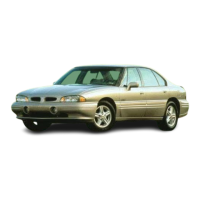
Do you have a question about the Pontiac 1999 Bonneville and is the answer not in the manual?
| Brand | Pontiac |
|---|---|
| Model | 1999 Bonneville |
| Category | Automobile |
| Language | English |
How to adjust seats, reclining seatbacks, and head restraints.
Information on proper safety belt usage and things to avoid.
Addresses common questions about safety belt functionality and necessity.
Guidance for adults on wearing lap-shoulder belts correctly.
Details on adjusting the driver's seat and restraint system.
Proper safety belt usage recommendations for pregnant women.
Instructions for proper safety belt usage for the front passenger.
Explanation of the vehicle's air bag system and its function.
Guidance on using safety belts in the center seating position.
Importance and instructions for rear seat passenger belt usage.
Instructions for installing and using comfort guides for rear seat belts.
General information on child protection and the need for restraints.
Information on different types of add-on child restraints and their usage.
Guidance for older children on using vehicle safety belts properly.
Information on when and how to use a safety belt extender.
How to inspect safety belts, buckles, and air bag system parts.
Guidance on replacing restraint system parts after a collision.
Information on ignition and door keys, including code tags.
Details on manual, power, and automatic door locking features.
Operation and troubleshooting for the remote keyless entry system.
Information on trunk lock release and remote trunk release options.
Tips on preventing vehicle theft and parking security.
How to activate and test the theft-deterrent alarm system.
Explanation of the passive theft-deterrent system and its operation.
Guidelines for breaking in a new vehicle for optimal performance.
Description of the five ignition switch positions.
Procedure for starting the engine, including V6 and cautions.
Explanation of shift lever positions and operation, including cautions.
Overview of instrument panel components and their functions.
How to operate the vehicle's air system for heating, cooling, and ventilation.
Guidelines for using the air conditioning system for cooling.
Instructions for using the heating system for warming the cabin.
How to use air outlets for directing airflow and ventilation.
Using DEFOG and DEFROST modes to clear windshields.
Operation and precautions for the rear window defogger system.
Overview of the Delco Electronics audio system and its features.
How to find stations, set presets, and adjust tone and balance.
Operation of the radio and cassette tape player functions.
Using the equalizer and tape player functions for enhanced audio.
How to play compact discs and use the radio functions.
How to activate and unlock the radio's theft-deterrent feature.
Using steering wheel buttons to control radio functions.
Recommendations for cleaning and maintaining the cassette tape player.
Care and maintenance for the fixed mast antenna.
Tips for cleaning and maintaining the power antenna mast.
Advice on being prepared for unexpected situations and driving safely.
Information on the dangers of driving under the influence of alcohol.
Explanation of the three systems controlling vehicle movement: brakes, steering, accelerator.
Details on perception time, reaction time, and stopping distances.
Information on power steering, Magnasteer, and steering tips.
How to recover your vehicle if its wheels drop off the road edge.
Tips for safely passing other vehicles on two-lane roads.
Understanding skidding and how to regain control of the vehicle.
Tips and considerations for safe driving during nighttime hours.
Advice for driving safely on wet roads and in rainy conditions.
Safety tips for navigating city streets with heavy traffic.
Essential advice for safe and smooth freeway driving.
Checklist of vehicle readiness and trip preparation items.
Awareness and prevention tips for driver fatigue and inattention.
Specific driving techniques and precautions for hilly terrain.
Tips and emergency supplies for driving in winter conditions.
Instructions and guidelines for towing your vehicle behind an RV.
Information on vehicle weight limits, capacity, and proper loading.
Essential tips, safety rules, and equipment for safe trailer towing.
How to operate hazard warning flashers to alert others.
Information on using reflective triangles for roadside visibility.
Safe procedures for jump starting a vehicle with a dead battery.
Safety precautions and proper procedures for towing your vehicle.
What to do if your engine overheats, including steam warnings.
Components of the cooling system and coolant level checks.
What to do if a tire blows out or loses air suddenly.
Step-by-step instructions for safely changing a flat tire.
Information and limitations regarding the use of the compact spare tire.
Methods for freeing your vehicle when it is stuck in various conditions.
Importance of dealer service and using genuine GM parts.
Recommendations for gasoline octane ratings and fuel quality.
Safe procedures for refueling your vehicle and handling gasoline.
How to check various fluids and important underhood parts.
Checking engine oil level, adding oil, and types of oil to use.
Procedure for inspecting and replacing the air cleaner filter.
When to check and change automatic transaxle fluid.
Information on coolant types, levels, and adding coolant.
When and how to check power steering fluid level.
What to use and how to add windshield washer fluid.
Information on brake fluid level, wear, and pedal travel.
Information about the vehicle's battery and replacement recommendations.
Instructions for replacing exterior and interior light bulbs.
How to remove and replace windshield wiper blades.
Information on tire maintenance, pressure, and replacement.
General tips for cleaning and maintaining the vehicle's interior and exterior.
Methods for cleaning vinyl, fabric, carpet, and interior plastic components.
How to clean and maintain aluminum or chrome-plated wheels.
Importance of anti-corrosion material during sheet metal repairs.
How to repair stone chips, scratches, and other paint finish damage.
How to flush the underbody to prevent corrosion.
Protection of electrical components via circuit breakers and fuses.
How to check and replace fuses and understand circuit protection.
List of bulb types and locations for exterior and interior lamps.
Table of approximate vehicle capacities and specifications.
Detailed specifications for the 3800 Series II and Supercharged engines.
Guidelines for services to be performed at specific intervals based on driving habits.
Maintenance intervals for vehicles used primarily for short trips or city driving.
Maintenance intervals for vehicles used primarily for long trips or highway driving.
Checks and services owners can perform to maintain vehicle condition.
Essential checks to perform each time you refuel your vehicle.
How to check and add engine oil if the level is low.
How to check engine coolant level and add coolant if necessary.
How to check and add windshield washer fluid.
Monthly checks including tire inflation and cassette deck service.
Instructions for checking tire pressure and the compact spare tire.
Guidance on cleaning the cassette player for optimal performance.
Instructions for cleaning the power antenna mast.
Semi-annual checks including restraint systems and wiper blades.
How to inspect safety belts, buckles, and air bag system components.
How to inspect wiper blades for wear and replace inserts.
How to check the automatic transaxle fluid level and add if necessary.
Annual services including key lock cylinders and body lubrication.
Lubrication instructions for key lock cylinders.
Lubrication points for body hinges and latches.
How to check if the starter switch operates correctly in all gears.
Procedure to check the BTSI system for proper shifting functionality.
Verifying that the ignition key locks correctly in PARK.
Checking the holding ability of the parking brake and transmission.
Inspections recommended for dealer or qualified service center.
Inspection of steering, suspension, and drive axle components for damage.
Inspection of the complete exhaust system for damage and leaks.
Inspection of hoses, pipes, and radiator for proper cooling system function.
Comprehensive inspection of brake lines, pads, rotors, and drums.
Additional inspection for vehicles in corrosive environments.
List of recommended fluids and lubricants for vehicle maintenance.
A log for recording performed maintenance services and dates.
Overview of Pontiac's customer care philosophy and benefits.
Steps to follow for resolving customer concerns with dealerships and Pontiac.
Contact information for deaf, hard of hearing, or speech-impaired customers.
Contact details and addresses for Pontiac's customer assistance centers.
Program details for reimbursement of adaptive equipment for qualified applicants.
Overview of roadside assistance services provided for new Pontiac vehicles.
Information on roadside assistance programs for Canadian vehicles.
Details on transportation options available during warranty repairs.
Information regarding the vehicle's warranty coverage booklet.
How to report vehicle safety defects to NHTSA and General Motors.
How to report vehicle safety defects to Transport Canada and General Motors.
How to report vehicle safety defects directly to General Motors.
Information on purchasing service and owner publications in Canada.
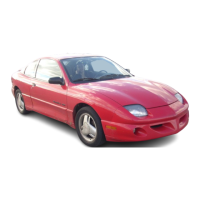
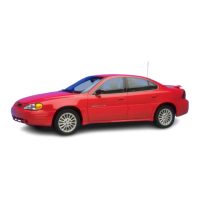
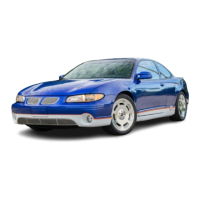

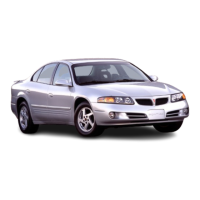
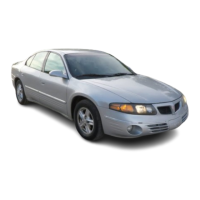
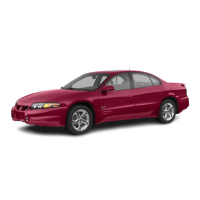
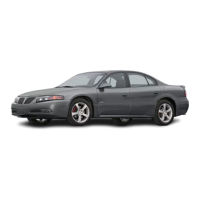
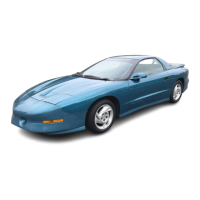
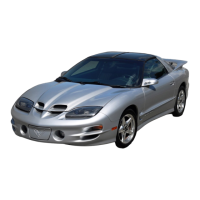
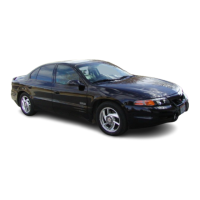
